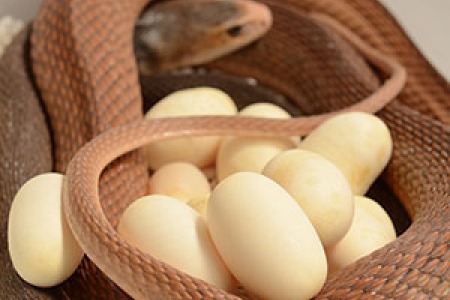Expert bites curiosity on deadly snakes
The puzzling reproductive patterns of Australia’s longest venomous snake have been uncovered by a Charles Darwin University student.
This is the first time the female Coastal Taipan’s physiological values, in its ability to store and maintain sperm for extended periods, have been intimately researched.
The study showed the female snake can lay three clutches of eggs, and can lay its third clutch of eggs up to six months after mating.
Snake expert and CDU Bachelor of Environmental Science student, Luke Allen said the female was able to store sperm in pocket-like structures in the back end of its oviduct after mating.
“I was curious to find out how and why some species of snakes seem to have this attribute, and others don’t,” Mr Allen said.
“It seems that these cells that line the inside of the oviduct must be secretary cells, which produce to maintain and nourish the sperm in a healthy state for further use.”
The Coastal Taipan is native to sub-tropical to tropical Australia and southern Papuan New Guinea.
Mr Allen said further research could enhance captive breeding management strategies of the species, along with further management of wild populations.
“In the case of the Coastal Taipan, its status is said to be stable in the wild,” Mr Allen said.
“But, using this as a model and applying this research to other species may assist the management strategies of species of high conservation status.”
Mr Allen conducted a close study of the captive breeding program of the Coastal Taipan colony at Venom Supplies venom laboratory in South Australia, as curator of the institution.
“The ability to study the values of these venomous snakes in a controlled environment, such as our laboratory, is a major advantage,” he said.
“Trying to undertake this type of study in the wild would simply be impossible.”
Mr Allen plans to conduct further study on the project, “Research into the Reproductive Biology of the Coastal Taipan (Oxyuranus scutellatus)” and to research other species.
